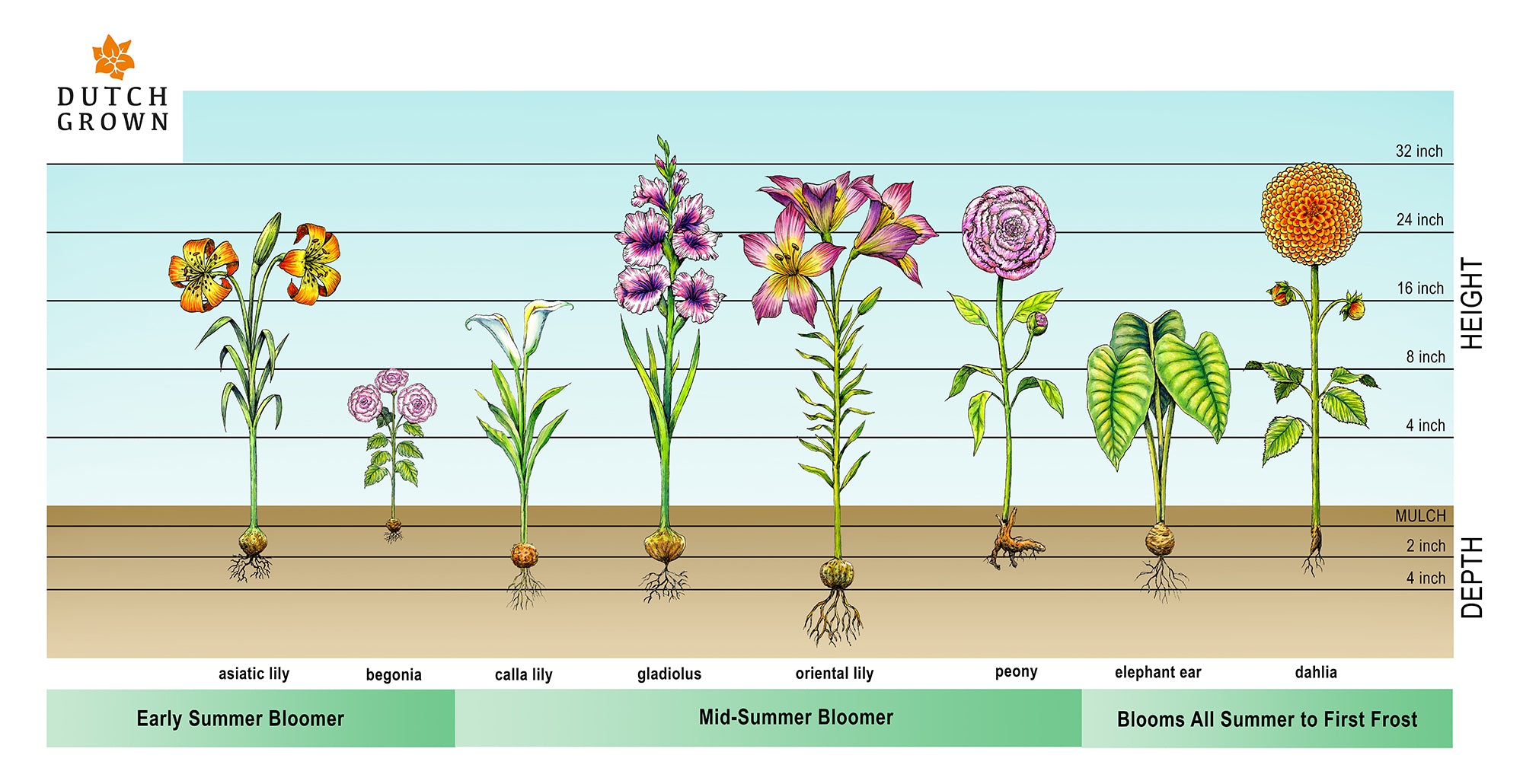Spring-planted bulbs are an important and versatile addition to all yards and gardens, providing drifts of gorgeous color throughout the Summer season. In addition, most bulbs grow well in pots or containers, and many are attractive to pollinators such as bees and butterflies. For the best and most dramatic effect it’s always worthwhile buying more bulbs than you think you’ll need, as bulbs make the best impact when planted en masse.
Follow our handy tips below to get the most out of your Spring-planted, Summer-blooming bulbs:
Forward planning
It pays to plan ahead. As well as taking the color and size of your plants and flowers into consideration when planning your garden, you should also consider the blooming schedule of your bulbs. Every flower bulb blooms at a different stage in the season. For example, Asiatic lilies and begonias bloom early summer, Calla lilies and gladioli in midsummer, whereas dahlias bloom right through the fall. By taking the bulbs’ blooming times into account and planting accordingly, you can be rewarded with a riot of color and fragrance from the very beginning of the season through to the end, and right up to the first frost.

Taking your zone into account
The US is divided into climate zones based on average minimum winter temperatures. These climate zones range from zone 12 (tropical) to zone 2 (arctic). To find your hardiness zone, click HERE.
Choosing winter hardy plants for your area
Bulbs and plants are given a hardiness rating that lets you know how much winter cold they are able to tolerate, and there are many tropical summer-blooming bulb that can't survive cold winters This doesn’t mean that gardeners in more northern areas have to miss out though, they just need to either treat these plants as annuals, i.e. buy new bulbs each spring, or, bring the bulbs indoors over the colder months (this is known as ‘overwintering’).
When to Plant Summer Bulbs
Summer bulbs should be planted in mid to late spring, once the risk of frost has passed. Night-time temperatures should average at least 60°F, and soil temperatures should be in the range of 65 to 70°F.
Sunlight and soil preferences
Nearly all bulbs require loose, well-drained soil. Planting in soggy areas of your garden will cause your bulbs to rot. If your soil happens to be compacted, you can improve it by adding compost and peat moss.
When it comes to the amount of sunlight or shade required, bulbs come with recommendations and preferences, and it’s important to take these into account as otherwise your bulbs will simply not perform. A general guide to these recommendations is:
Full sun areas get 6 or more hours of sunlight.
Part sun areas get 4-6 hours of sunlight per day.
Shade areas receive less than 4 hours of sunlight per day.
As part of your planning stage before planting, it’s good to take the time to get to know how much sun and shade each area of your garden receives. You can then ensure you match the plants you choose with the optimum location for their success.
Gardeners will reap the benefits of a well-planned garden for years and years.


